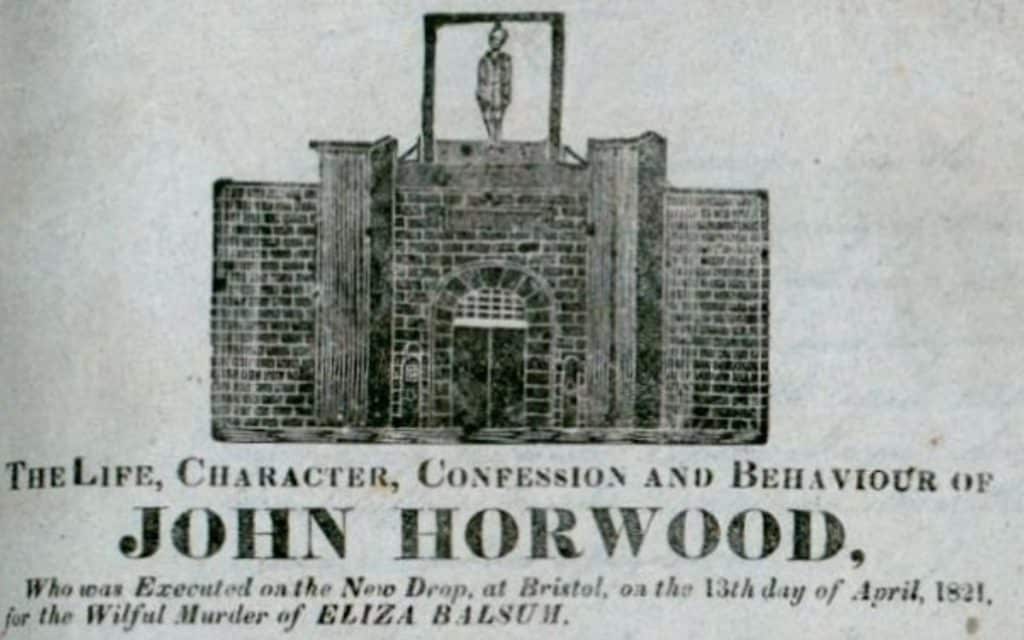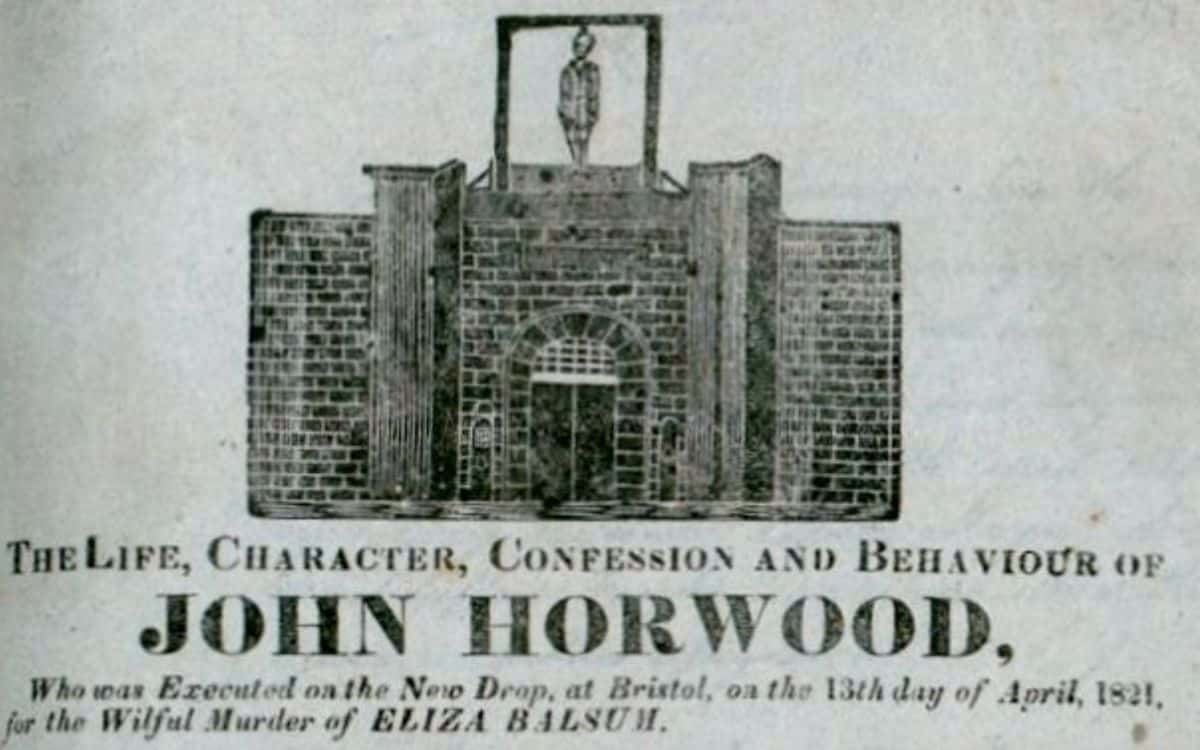John Horwood’s execution in Bristol ended in 1821, but his story — bound in his own skin — still haunts us today
In April 2011, a coffin was finally lowered into the earth at a cemetery in Bristol. Inside lay the remains of John Horwood—a man executed nearly 200 years earlier. His burial was not a routine affair but the conclusion of a disturbing chapter in British criminal history.
Horwood was hanged in 1821 at just 18 years old, condemned for the murder of Eliza Balsum. But unlike most executed men of his time, his fate did not end with the noose. His body was turned into an anatomical specimen, and his skeleton was displayed for almost two centuries. Even more grotesquely, his skin was used to bind a book detailing his trial—a macabre relic of 19th-century justice.
But as Horwood was finally laid to rest in 2011, another question refused to die: was he truly guilty? Or was he a victim of a vengeful system, condemned more for who he was than for what he had done?
The Crime That Sealed His Fate
John Horwood was born in 1803 in Hanham, a small village near Bristol. By all accounts, he was a troubled youth, frequently getting into fights and mischief. His downfall came when he became infatuated with Eliza Balsum, a local girl who ultimately rejected him. In January 1821, events took a deadly turn.
Eliza was walking near a quarry when Horwood allegedly threw a stone at her, striking her on the head. She later sought medical help from Dr Richard Smith, a prominent Bristol surgeon. Smith, however, decided to operate—an intervention that some believe hastened her death rather than saved her. Eliza died of complications, and Horwood was swiftly arrested for her murder.
At his trial, the evidence against him seemed damning. Witnesses claimed he had previously threatened Eliza, and the thrown stone was seen as proof of his intent to kill. The jury wasted no time in finding him guilty, and on 13 April 1821, he was hanged at Bristol New Gaol. It was a routine execution by the brutal standards of the time. What followed, however, was anything but ordinary.
A Fate Worse Than Death?
Horwood’s body was handed over to Dr Richard Smith—the very man whose treatment had failed to save Eliza. Rather than allowing him a dignified burial, Smith used Horwood’s corpse for public dissection, as was common practice for executed criminals. But what happened next was far more grotesque.
Horwood’s skeleton was preserved, becoming a permanent exhibit at the Bristol Royal Infirmary. His skin was tanned and used to bind a book—a gruesome volume containing notes on his trial, complete with a Latin inscription translating to “This is the fate of murderers.”
For almost 190 years, Horwood’s remains were kept in medical collections, a relic of a time when justice and vengeance were often indistinguishable. It was only in the 21st century, after efforts from his descendants, that his bones were finally released for burial.

Was John Horwood Guilty?
The case against Horwood seemed clear-cut in 1821, but viewed with modern eyes, there are reasons to doubt whether justice was served.
Firstly, there is the question of intent. Did Horwood mean to kill Eliza, or was the thrown stone simply an act of youthful aggression that got out of hand? In today’s courts, his actions might have been classified as manslaughter rather than murder.
Then there’s the matter of medical treatment. Eliza’s fatal injury may have been the result of Dr Smith’s own surgical failings rather than Horwood’s attack. Given that Smith later dissected Horwood’s body and bound his trial documents in his skin, it raises the disturbing possibility that he had a personal stake in ensuring the boy was convicted.
Finally, there is the speed of the trial. Horwood was sentenced and hanged within months of Eliza’s death. With limited forensic knowledge at the time, it is doubtful that his defence had much opportunity to argue against the murder charge. Was Horwood’s fate sealed from the moment he was arrested?
Perhaps we will never know the full truth. But what remains certain is that, guilty or not, John Horwood suffered a punishment that extended far beyond the hangman’s noose. His body was exploited, his name bound in his own skin, and his story transformed into a dark legend of Bristol’s past.
And now, at last, he rests. But whether it is the peace of the wrongly accused or the silence of the condemned, we can only wonder.
What do you think of John Horwood’s story: Was justice done, or was he a victim of his time? Share your thoughts in the comments.



